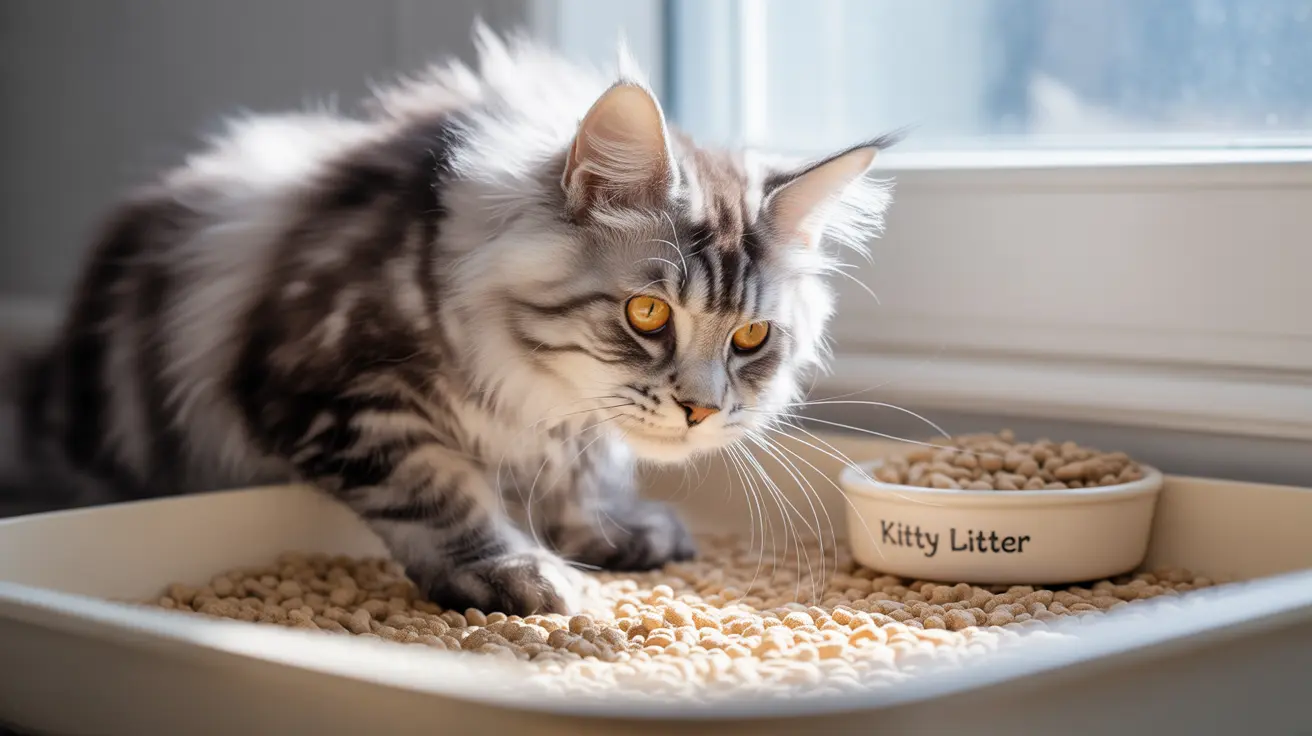Introduction
Understanding how non-clumping cat litter works is essential for pet owners seeking the best solutions for their feline friends. Unlike its clumping counterpart, non-clumping cat litter uses different mechanisms to absorb moisture and control odors, offering unique benefits for specific situations and cat preferences.
In this comprehensive guide, we'll explore the science behind non-clumping litter's absorption properties, compare various materials, and provide expert maintenance tips to help you make an informed decision for your cat's needs.
The Science of Non-Clumping Litter Absorption
Non-clumping cat litter works through a simple yet effective absorption process. When your cat urinates, the litter material absorbs the liquid into its porous structure without forming solid clumps. Instead, the moisture is distributed throughout the granules, while built-in deodorizers work to neutralize unpleasant smells.
Different materials offer varying levels of absorption capacity. Clay-based varieties use natural minerals to soak up moisture, while silica gel crystals can absorb up to 40 times their weight in liquid. Pine pellets transform into sawdust when wet, making waste easy to identify and remove.
Common Materials and Their Effectiveness
Traditional Clay Litter
Clay-based non-clumping litter, often made from Fuller's Earth, provides reliable absorption and moderate odor control. While economical, it may produce more dust than alternative materials.
Silica Gel Crystals
These advanced moisture-wicking crystals offer superior absorption and excellent odor control. Their micro-porous structure traps liquids efficiently while releasing minimal dust.
Natural Alternatives
Pine pellets and recycled paper products provide eco-friendly options with good absorption properties. These materials are particularly suitable for cats with respiratory sensitivities or those who prefer natural substances.
Maintenance and Cleaning Requirements
Proper maintenance is crucial for non-clumping litter effectiveness. Daily removal of solid waste is essential, while complete litter replacement should occur weekly for optimal hygiene. Some signs that indicate it's time to change the litter include:
- Strong ammonia odor
- Visibly saturated litter
- Decreased absorption capacity
- Persistent unpleasant smells despite cleaning
Odor Control Mechanisms
Non-clumping litter employs various odor control strategies, from activated charcoal to natural pine scents. Many brands incorporate special deodorizing agents that activate upon contact with moisture, helping to maintain a fresh-smelling litter box environment.
Benefits for Special Situations
Non-clumping litter proves particularly valuable in certain scenarios:
- Kitten households (safer if accidentally ingested)
- Cats with respiratory sensitivities (especially low-dust varieties)
- Long-haired cats (less likely to stick to fur)
- Post-surgical recovery (reduced risk of complications)
Frequently Asked Questions
How does non-clumping cat litter absorb moisture and control odors without forming clumps?
Non-clumping cat litter uses porous materials that absorb liquid throughout their structure rather than forming solid masses. Odor control comes from built-in deodorizers and the litter's natural absorption properties.
What materials are commonly used in non-clumping cat litter, and how do they affect performance?
Common materials include clay, silica gel crystals, pine pellets, and recycled paper. Each material offers different benefits: clay is economical, silica provides superior absorption, pine offers natural odor control, and paper is dust-free.
How often should non-clumping litter be changed, and what is the best way to maintain cleanliness?
Non-clumping litter typically requires complete replacement weekly, with daily scooping of solid waste. Maintain cleanliness by monitoring saturation levels and replacing litter before it becomes fully saturated.
What are the advantages and disadvantages of using non-clumping litter compared to clumping litter?
Advantages include lower dust levels, safer for kittens, and less tracking. Disadvantages include more frequent complete changes, less efficient liquid waste removal, and potentially higher long-term costs.
Is non-clumping litter safer or better for kittens, cats with allergies, or long-haired cats?
Yes, non-clumping litter is generally safer for kittens and better for cats with allergies due to lower dust levels. It's also advantageous for long-haired cats as it's less likely to stick to their fur.
Conclusion
Understanding how non-clumping cat litter works helps you make informed decisions about your cat's litter box needs. While it requires more frequent complete changes than clumping varieties, its unique benefits make it an excellent choice for many situations, particularly for kittens, sensitive cats, and those with special needs.






